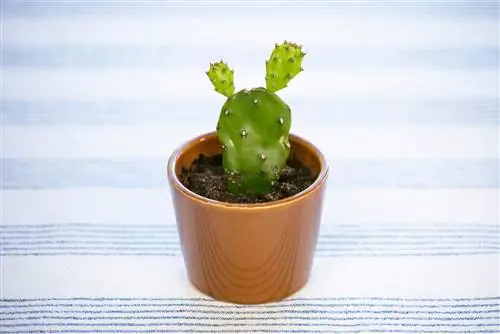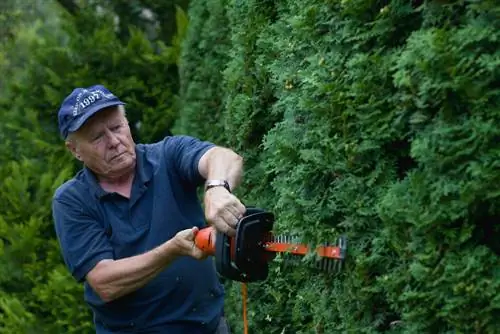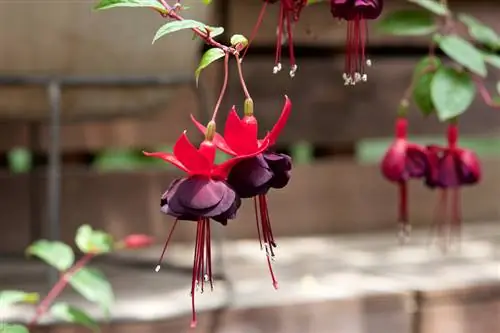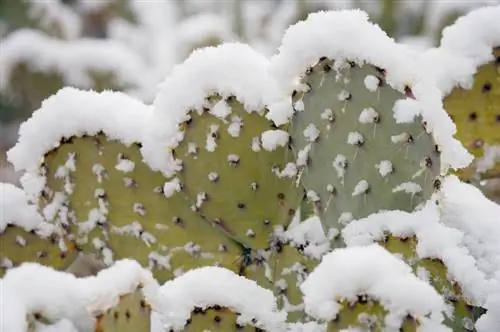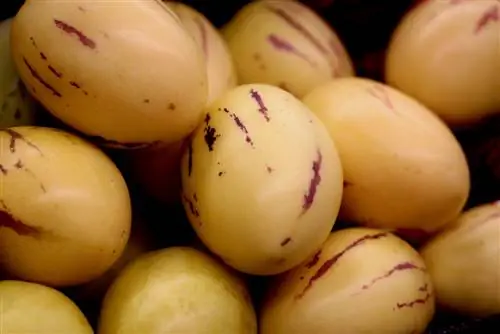- Author admin [email protected].
- Public 2023-12-16 16:46.
- Last modified 2025-01-23 11:22.
Prickly pears are fruits of Opuntia that contain many he althy substances. In order for them to grow on the cactus ears, good care is important. Pruning has a special position here, because the wrong measures cause the growth of these ornamental plants to suffer.

Is it necessary to cut a prickly pear?
Prickly pear cacti do not need topiary, otherwise they lose their bizarre shape and their ability to bloom is restricted. Only cut off affected parts of the plant if there are diseases or deficiency symptoms. Broken cactus ears can be used for propagation.
How the prickly pear cactus grows
Most prickly pear cacti that are commercially available as ornamental plants belong to the species Opuntia ficus-indica. This develops regular branches, which are also called ears because of their shape. They are thickened shoots in which the plant stores water. They have numerous fine spines and can appear obovate, broad or elongated. In Central America and Mexico, people eat young shoots as a vegetable known as nopales or nopalitos. The plant sections are harvested, peeled and processed.
Are cuts necessary?
These cacti do not require any topiary, because regular removal of shoots would cause the Opuntia to lose its bizarre shape. Since the flowers sprout on the annual parts of the plant, pruning measures would further limit the flowering potential. If your prickly pear shows any diseases or deficiency symptoms in the form of discoloration, cut off the affected parts of the plant with a sharp knife.
Propagate
If a cactus ear breaks off, you have ideal material for propagation from cuttings. You can also specifically cut off a few shoots from strong and well-grown specimens with clean scissors and grow them. Rooting works easily with proper care.
How to proceed:
- Let the interface dry for about 14 days
- halve specimens that are too large
- Press partial plants with the cut surface into cactus soil
- stabilize with rods
Tip
Wear sturdy gloves when caring for the plant, because the fine bristles anchor themselves in the skin with barbs and are therefore difficult to remove. A little hot wax on the spot helps pull out the spines with tweezers.
Care
Water the substrate with small amounts of water to stimulate root formation. Waterlogging should not occur as this poses a risk of mold. After two to three months, you can gently pull on the plant to see whether it has grown. If it is firmly attached, it has developed roots.
Planting
Opuntias grow in warm and dry areas. They tolerate heat and long periods of drought. Not every species survives the sub-zero temperatures of the Central European winter. Hardy varieties are allowed to go into the garden, where they stay all year round. Even though they may appear dry and lifeless during the winter months, they will grow with new energy come spring. It is important that you fill the bed with fine gravel. This substrate ensures dry conditions and improves water drainage.
Watering and fertilizing
During spring, opuntias require regular but careful watering. In summer, occasional watering is sufficient as soon as the root ball has dried out. At the beginning of the growing season, the cacti are grateful for fertilization.

